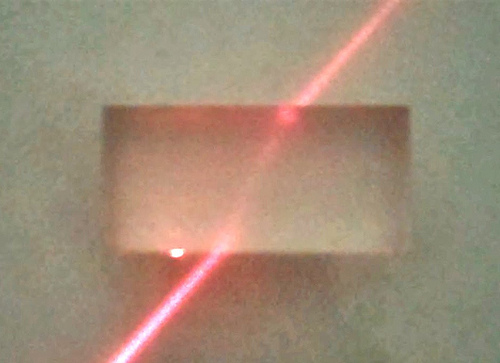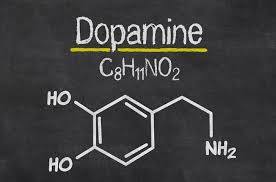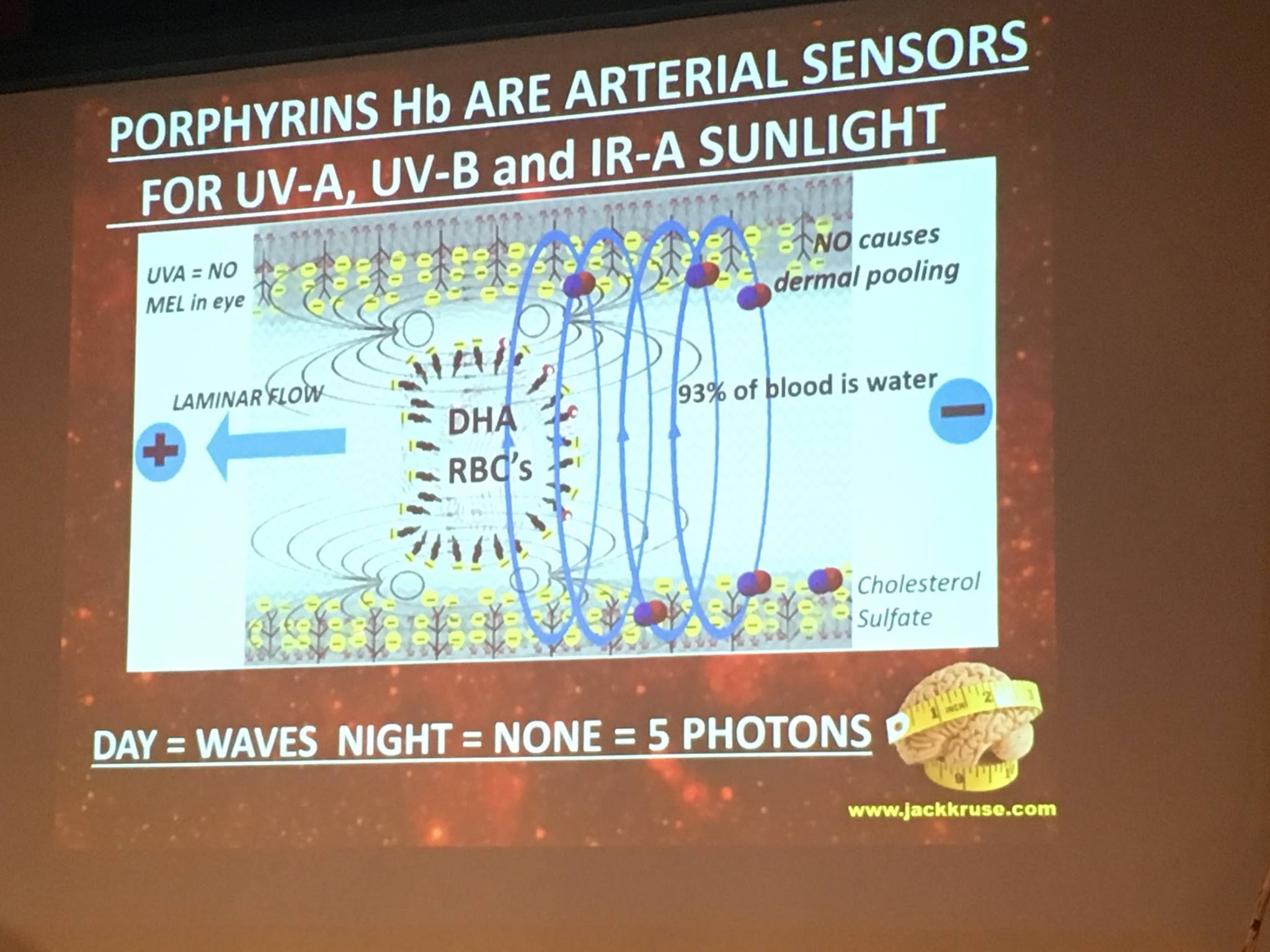BLOG TAKEAWAYS: Adrenal fatigue is not accepted by medicine as a diagnosis for one reason: the process is quantized and medicine and biology ignore these processes. This blog discusses those processes in detail.

HOW?
Might the density and confirmation of our tissues determine the time we sense? Does stress change our tissues in some way to alter time perception? Stress increases chaos and chaos creates swelling and swelling increases pressure in a cell. Density links to buoyancy, which link to the spectrum of light that cells are impacted by. In nature, UV light builds pressure photoelectrically by storing energy in a cell, pressure builds heat (IR), and heat is emitted when electric and magnetic forces are confined to a tight space.
Heat expands most things, but not all things in nature. Life uses water for this key reason,
and mitochondria have chosen to release heat and create water for one specific reason……………because heat is capable of shrinking water and not expanding it. Water expands when it freezes. This anomaly breaks nature symmetry in a cell by shortening the distance of the respiratory proteins on ECT to make electron tunneling much faster-increasing fuel efficiency for life. When mitochondria are energy efficient in a cell, they become more capable of confining light using the electric and magnetic charge in mitochondria. This is why healthy cells release less light and why overly stressed cells release more ELF-UV.
Why does an over-stressed signal in our cells, alter our time perception? Why does time slow down when we fear for our lives? Why do we die sooner when we are stressed? Does the brain shift gears, for a few suspended seconds and perceive the world at half speed, or is some other mechanism at work? Might it be that time is different as a particle and as a wave as it travels in our tissues? We know that light slows down in a dense media and density links to buoyancy in a cell. Snell’s law says and proves these relationships exist in nature.

That law is important evidence of light being used as a wave and not as a particle. Usually, when the light is used as a wave its frequency must be lower in the ultraviolet range. This means the light is more wave-like as it is red and more particle-like when it is ultraviolet. In the visible spectrum, the lowest frequency of light is red and infrared. It is interesting that fat liberation from mitochondria, releases protons, ultra-weak UV light, infrared light, CO2, and water. It appears that respiratory proteins shrink most when our surfaces are absorbing ultraviolet light and out mitochondrial matrix is emitting infrared light. It begins to make sense why our “eye camera” is blind to these two frequencies. This quotient of what a mitochondrion produces contains important data for us to consider when we think about chronic fatigue states. The infrared light changes water’s physic characteristics and makes it denser. Liquid water has more density than ice, hence why ice floats in liquid water, and as a result, has to have less light energy stored in its lattice. This is also why ice reflects sunlight to create the albedo effect at the poles. This physical change is how Snell’s law works in our cells because water density is linked to its refractive abilities to light. This simple small alteration changes how light can interact with it at our surfaces. How does this tie to stress, adrenal fatigue and the ability to burn fat in a mitochondrion?

The particle portion of the Photoelectric effect is instantaneous and operates by Fermat’s principle of least time. Density slows light by Snell’s law and Fermat’s principle. When we slow light, are we creating time for things alive by making things with mass? Yes we are. My Vermont 2017 lays that story at.
We have known for a long time that any kind of long-term stressor can induce adrenal fatigue. A long-term stressor overwhelms the regenerative side of the coupled system and this results in energy loss and because energy cannot be stored. When energy cannot be stored in a cell, the energy must be thermalized. This is why all mammals are warm-blooded. I became acutely aware of this counterintuitive relationship of eukaryotic cells, over a decade ago when I trying to lose weight to offset my obesity using light and cold when I came up the Leptin Rx and Cold Thermogenesis protocols. Light and cold, change the water in cells and these, in turn, work to alter many of the hormones like leptin, adiponectin, dopamine, melatonin, neuropsin, alpha-melanocyte-stimulating hormone (MSH), and betatrophin. The guardian of the pituitary gland is dopamine, and the guardian for the recycling programs in cells is the local production of melatonin that controls the respiratory protein geometry.

Listing all those hormones clearly show there are many paths that can lead to many diseases as the length of electron chain transport (ECT) changes. The link is that all of the pathways destroy energy production. And anytime energy production is destroyed or limited, the loss of tissue mass and function is the result. As functional physiologic mass is lost, the tissue expands in size. There are many pathways that lead to the result of adrenal fatigue but most people keep focusing in on the adrenal gland when it really all begins with an altered light spectrum. An altered light spectrum disrupts the balance between the paraventricular nucleus (PVN) and the vagal systems that control the sympathetic tone versus the parasympathetic tone. Ubiquitination 24, Time 6, and Time 9 clearly show how UV light creates the correlated cycles of a controlled stressor and regeneration programs using the biogenic amines that control this entire process in the “eye clock” system. An altered spectrum of light via the eye camera mechanism can and does cause adrenal fatigue by lowering cortisol to extremely low levels. How?

Dopamine one of these biogenic amines controls the release of most of the anterior pituitary hormones that act as proxies for clinicians to know when adrenal fatigue or PVN signaling is no longer optimized. We have known this since 1995. Endogenous hormone production is yoked directly to the proper physiologic release of hormones using the solar spectrum. When the solar spectrum is altered at all, this alters the hormone panel that is measured by a lab. In this way, an altered hormone panel tells the astute clinician that the patient’s light environment is not full spectrum. (Not full spectrum = low quantum yield = altered hormone panels)
Life is clever. It has figured out how to transform electrons out of everything we eat and keep them under control in cells until we need their energy. Electrons must flow in order for energy to be gained elsewhere. Electrons can be stored in tissues in semiconductors, but when they are stored they cannot act like a wave. They only have particle-like behavior. When the electron leaves the tissue its energy has to be thermalized to affect energy flows elsewhere in a cell. The electron, as it leaves our atoms, crystallizes out of Schrödinger’s mist like a genie emerging from his bottle; if that does not shock you, realize that the genie is capable of emitting light it carries when it wants to end the excitement in its life. The Leptin Rx is built around this idea. It also points out why diet can never solve adrenal fatigue because it is a quantum disease at its core. Let me explain why.
All foods are electrons/protons, and all electrons are exactly the same in the universe, and can only be excited by light. Foods are supposed to be excited by sunlight, not artificial light. So the difference, we find in foods today is influenced by the frequencies of light they contain based upon how they were created. Nutrient density has different connotations to different people. When you consider the machinery of energy generation in a cell, this should narrow the discussion for people, but it has not. The input to mitochondria is called electron chain transport for a deep reason; moreover, food guru’s link to their ideas to calories and macro’s. This is not wise because it negates the impact of nature. Energy flows all come back to electrons and protons in nature. Maple syrup comes from a tree that makes it from CO2, water, and sunlight using photosynthesis. That process is now known to be fully quantized. In fact, the entire food chain is based upon photosynthetic webs. Most food gurus ignore that formalism, for business concerns. Moreover, a mitochondrion samples this quantized process, by breaking all foods down to electrons and the light photons that have excited those electrons. Anyone who believes wellness really begins with food has a deep philosophical problem with Mother Nature, and her design of mitochondria, and its place in a cell.
Melanocyte-stimulating hormone (MSH) is a collective name for a group of peptide hormones produced by the skin, eye, pituitary gland and hypothalamus in response to ultraviolet radiation. It plays a key role in producing colored pigmentation found in the skin, hair, and eyes of mammals. It does this by inducing specialized skin cells called melanocytes to produce melanin which stores UV light, until nightfall, when our bodies begin to harvest this light, to drive regeneration programs in our tissues. It will not work if blue light, specifically is being sensed by our surfaces.
Melanocyte-stimulating hormones, like alpha-melanotropin and MSH function in a number of diverse physiological roles including regulation of appetite. I covered these in detail in my book, The Epi-Paleo Rx. Remember all foods break down to electrons to feed into ECT in mitochondria. The more electrons that are collected from the sun and magnetic field, the fewer electrons we need from foods. In this way, UV light is a proxy for food. MSH is that “proxy protein” that gives leptin the ability to count electrons to suppress or increase our appetite naturally. MSH and leptin also link to a circadian relationship to adrenal cortisol release at 4 AM when the light is absent. This drives fat burning and ketosis at night when we are sleeping and regenerating. Alpha-MSH has profound immunomodulatory properties on our immune systems and works with Vitamin D3 to turn both arms of immunity on and control epigenetic expression. Alpha MSH and leptin work at night and Vitamin D3 operate in the daytime respectively, to give us neuro-protection by raising melatonin levels.

Dopamine is the governor of this response in the eye and pituitary. This makes the proper solar spectrum collisions with the RPE a critical step in the biophysical process. This is how light frequency is changed to a photochemical stimulus. The chemicals then become correlated novelties in biochemistry for the substrate chemicals that work to form circadian coupling that control the autonomic system. The solar spectrum and biogenic amines are essential for proper physiological reactions and adaptations during physical work and influence the recovery phase after exercise by modulating anabolic and catabolic processes in tissues. Those processes control how the photoelectric effect interacts with our atomic lattice. In other words, are we using more of the particle part of the light, than the wave function of light in controlling these cycles? Anything that allows too many protons or too few electrons, or a combination of both, at either end of the brain-gut axis can cause this change in optical signaling. Most people are not aware that brain-gut axis begins in the central retinal pathways of the eye.
The duality of light is a correlative phenomenon to the two divisions of the autonomic nervous system. For example, testosterone and cortisol are known to play a significant role in the metabolism of protein as well as carbohydrate metabolism by clinicians. Both are competitive agonists at the receptor level of muscular cells. This is why the testosterone/cortisol ratio is used as an indication of the anabolic/catabolic balance. This ratio decreases in relation to the intensity and duration of physical exercise, as well as during periods of intense training or repetitive competition, and can be reversed by regenerative measures. Testosterone levels drop under blue light conditions and are recovered under UV/IR conditions. Cortisol levels are lowered under full spectrum light. Today, those light conditions are no longer consistently normal because of anthropometric changes to our environments. The spectrum of light is not what it was when we evolved 4-6 million years. Modern man has altered it and changed evolutionary trajectory. As such, human evolution has changed since Tesla and Westinghouse lit up the World’s Fair in Chicago in the late 19th century.

Adrenal fatigue links to a lack of UV and IR light via our surface receptors and the receptor of our hormones. Adrenal fatigue links directly to the PVN. Light information is captured exclusively by the eyes using specialized retinal photoreceptors and transduce directly to the SCN via a dedicated neural pathway, the retinohypothalamic tract (RHT). Each day the light-dark cycle resets the internal clock, which in turn synchronizes the physiology and behavior controlled by the clock.
The major biochemical correlate of the light-dark cycle is provided by the pineal-melatonin rhythm. Under normal light-dark conditions, melatonin is produced only during the night, by using sunlight captured in biogenic amine during bright sunlight during the day to power the effect. Moreover, it provides an internal representation of the environmental photoperiod, specifically night length.
PITUITARY EYE CONNECTION
This pathway also helps yoke the Vitamin A cycle in the brain to the photoreceptors in our eye and directly to the environment in this way. These cycles become “correlated novelties” that allow the brain to predict the future trends by properly setting photochemical cycles. This is what we call intuition. The trend is predictable if dopamine is also being created endogenously by these cycles that should all correlate to the sun’s messages in its frequencies. This is why dopamine and melatonin are correlated chemically by being biogenic amines even though one is active in light and the other is active in the absence of light. Each one’s cycle, however, should never be uncorrelated without the other unless the light stimulus is very altered in some way tied to an unbalanced spectrum. The synthesis and timing of melatonin production require an afferent full spectrum light signal from the SCN which projects to the pineal gland via the paraventricular nucleus and to the superior cervical ganglion.
THE FIRST 4 THORACIC NERVES ARE KEY TO THE SYMPATHETIC CHAIN TO THE RETINA AND BRAIN
This is why brown adipose tissue (BAT) is found over the posterior neck region where this ganglion exists. People have failed to link the anatomic function to the mitochondrial purpose of this link because it is quantum. The signal to burn fat is controlled by the hormone betatrophin. Betatrophin leads to less fat burning because it suppresses adipose triglyceride lipase, an enzyme that breaks down stored fat. A lack of UV light from the retinal pathways raises betatrophin. That is why sunlight has a massive effect on the amount of brown fat over the nape of your neck. It is also why blue light can give you a huge white fat pad over neck devoid of any brown fat. Brown fat is brown because it has a higher mitochondrial density to burn fat. That pathway is buried in your first 4 thoracic nerves then signals burning of the visceral fat in your gut. So what happens if you live a life where the skin innervating this fat pad never see sunlight?
If any of the initial sensory pathways are interrupted by these nerves that give input to the superior cervical ganglion, the entire feedback control mechanism is disrupted. An altered spectrum of light can do this. Betatrophin is a stress hormone linked to an altered spectrum of light in this region. This tells you clothing or working out indoors will send altered signals from these thoracic nerves to the superior cervical ganglion. What does this ganglion control? It controls blood flow to the eye, RPE, and to the entire brain. Betatrophin is a stress protein that causes histidine deprivation in our cells. This is critical in building your solar callus. This mechanism is well worked in plants but no one seems to realize it works in humans using light signaling. Why is histidine linked to a light story?
This changes how our tissues work photoelectrically using either the particle part of the light or the waveform of light. Light carries this duality naturally and the tissue that measures it determines what part of light it will use. We need a strong UV stimulus on our surfaces, to burn fat well in mammals using the particle part of the photoelectric effect. This frequency of light shrinks the respiratory proteins best because it makes melatonin locally that act to control mitochondrial DNA.
This is why insulin, leptin, adiponectin, norepinephrine, melatonin, dopamine, and melanin are all fundamentally solar hormones or neurotransmitters. Most people have no idea this is true. It also points out why the Leptin Rx is designed around eating more during early sunlit hours. Mitochondria cristae have to be “geometrically lined” up perfectly around the central matrix to burn fat properly. Dr. Doug Wallace research has shown us this in experiments. The alignment leads to a specific vibration or oscillation from the mitochondria. This means that mitochondria oscillations have to be perfect to get this alignment. In healthy mitochondria, the oscillation is around 100Hz. If you cannot decipher the environmental signals well from our surfaces, you automatically become reliant on the TCA cycle as sugar burner and not a fat burner via beta-oxidation.
This has nothing to do with the fuel source you deliver to mitochondria because all food is essentially electrons. Foods have no ability to shrink respiratory proteins. This is why there is a delay in becoming being able to burn fat when you change your life. It also points out why appetite suppressant drugs really work on people initially in a weight loss program. They force you to fast chemically, and this shrinks your respiratory proteins because you are intermittent fasting via a chemical signal. If you remain in the same environment once you stop the appetite suppressants, that causes leptin resistance by elongating the respiratory proteins on ECT. This slows electron tunneling speeds and you will regain the weight and develop chronic fatigue.
You have to replace the defective mitochondria first, by lowering your high heteroplasmy rate, to become a fat burner. It has NOTHING TO do with the food FUEL. That is a bad idea built upon a food guru business plan to sell you foods, supplements, and diet books.
When we are truly connected to nature, time melts and so does fatigue.
The slope of the line of fading to mediocrity is proportional to the coherence of the connection to nature.
ENVIRONMENTAL SIGNALS ARE WHY YOU EVOLVED SENSORY ORGANS AT SURFACES
Biochemistry is not deterministic as most believe…….it is determined by what happens to the surfaces in our eye, skin, and gut. This is why circadian biology is incredibly important. Natural harmony requires seasonal destruction and renewal. Without renewal, we cannot sustain. We have to come apart, so we don’t fall apart. We are designed to use free radical signals to come apart in a controlled fashion. When the ECT is elongated we no longer make the correct free radicals in mitochondria. You don’t need drugs to suppress your appetite because cold can do it too.
COLD IMPROVES FREE RADICAL SIGNALING BY CONDENSING ECT
Fat burning can be activated two ways, in both arms of the autonomic nervous system (ANS). One uses cold to induce endogenous dopamine activation and eNOS and the vagal system uses UV induced dopamine pathways from the RHT in the central retina. Each pathway is controlled by the two separate arms of the autonomic nervous system to respond to seasonal changes on Earth. The cold pathway is controlled by the sympathetic nervous system and cold temperatures have been shown to increase dopamine and lower betatrophin signaling to break fat down. Colder temperatures on surfaces allow us to assimilate more UV light, to make more dopamine, and to stimulate melatonin cycles to improve the geometry of our respiratory proteins.
The higher our dopamine levels lower betatrophin levels and raise adiponectin levels while lowering leptin levels to burn fat to make heat, CO2, and water. The heat liberated from mitochondria shrink cell water to structure it to change its optical density. When the density is changed, the photoelectric effect in a cell then changes how light can be used. Structured cell water (coherent domain) is more dense, and as such, this affects Fermat’s principle of least time in a cell. As light travels through a less dense medium, to a more dense medium, the trajectory of the light is bent closer to the perpendicular to the surface of the media. This is exactly what Snell’s law said from observations made. Fermat’s principle is the mathematical proof of Snell’s observation. Both of them link directly to how the photoelectric effect works in dense media. Essentially, Fermat’s principle is the mathematical proof of Snell’s observation. This proof is what sparked Richard Feynman career as a human calculator.
Nature, like life, takes all sorts of strange twists and turns because of how she uses light differently as the local environment varies. These principles offend our sensibilities in biology. Most importantly they point out to us, that nature and life’s fundamental organization, are largely insensitive to one’s likes or dislikes because they are quantized. It is, how it is, so to speak. Feynman said just accepting nature as she is, is what we should do. This gave me the idea that maybe I should to think like this too, because he used the principle of least time, to repair the problems in the mathematics of QED, in much the same fashion. The QED problems were based upon the interactions of light and electrons, and in biology, we are suffering from the same problem today.
When the density is changed in cell water, this changes how the photoelectric effect can be utilized optically in a cell. So how does a density change scale to a cellular change?
The signaling of light on the retina changes as temperature changes. We now know the SCN is tuned to light and temperature changes. Surface temperatures in the eye and skin become able to use light in a non-linear fashion to signal and to “turn on” the ability to burn brown fat (BAT) to liberate protons, water, and ultra-weak UV- IR light in mitochondria during sleep. The surface light also stimulates the dopamine and melatonin cycles in both places. These also must be present to activate fat burning. When they are coupled, then sleep becomes regenerative to our tissues by using the infrared light inside a cell to affect cytochrome 3. Red light shrinks this cytochrome to increase tunneling speeds at the ATPase.
This energy source during night time is ketogenic in sleep, by design because we are not eating; it is not accomplished from food but from our own fat stores which are being used as we sleep. The energy liberated from fat becomes water, protons, CO2, contained in our brown fat (BAT). The exhaled CO2 cools the lung surface, and the CO2 stimulates deeper breathing so oxygen is brought to the mitochondria as the terminal electron receptor. In sleep apnea, this connection is uncoupled. Without enough oxygen present, not enough ultra-weak UV light is transformed from the matter inside of us, and as a result, no fat at night can be burned and sleep is never restorative.
Remember, brown fat is brown because it has more mitochondrial density. It also located over our shoulders because burning fat from this area increases cerebral blood flow at night. This is why the connection of the first four thoracic nerves links our BAT to our superior cervical ganglion is critical for regeneration of the brain at night. The protons from BAT are used to run the non-linear optical programs in the brain, at night when a light is absent. At night, in the brain, regeneration is designed to occur when the DC electric is absent. In experiments done in 1970, by A.N. Taylor and R.W. Wilson, it was shown that light via our retinal relays has an inhibitory effect on pineal gland’s DC electric current. These are mediated by retinal inputs from the central retinal pathways where melanopsin is the light protein. This shows you have devastating blue light can be at night. It links to weight gain and sleep apnea and no one in biology has made this linkage quite yet because they do not understand how light works on our surfaces to alter substrate biochemistry in the TCA and urea cycle.
Betatrophin and leptin resistance reduces the body’s ability to break down this fat, underscoring a link between chronic light stress and weight gain. To recapture this ability one must recapture the ability to make endogenous dopamine, melanin and melatonin using light, to cooling our surfaces. In this way, you may begin to see how the Leptin Rx and Cold Thermogenesis really work with nature.
This helps explain why blue light exposure during the night also inhibits local melatonin production in the RPE, acutely and provides an indirect assessment of light input to the SCN via the RHT. Light is the “human correlated novelty” to the presence of DC electric current in wakefulness, as Becker found in all of his work on salamanders and mammals. This finding has been largely ignored by biology to human peril in our modern world.
The slope of the line of fading to mediocrity and disease is proportional to the coherence of the connection to nature of sunlight during the day and magnetism at night.
Many with adrenal fatigue suffer poor sleep. This links chronic fatigue to the light mediated mechanism above. As sleep declines Vitamin A and D are also altered, and their ability to regenerate tissue also declines. Any chronic stressor that destroys the correlated chemicals required in these pathways that help facilitate sleep ruin regeneration. Many athletes and patients get told that they should consider sleeping pills or consider supplementation of oral melatonin as an aid. Bad idea. Just sleeping is not regenerative. If sleeping does not activate the superior cervical ganglion to increase cerebral blood flow no regeneration occurs. This is not a good idea when you understand the biophysics of the biogenic amines with respect to the natural solar spectrum.
As such, taking oral melatonin might be a really bad idea. Why? Oral melatonin is an inhibitor of retinal dopamine production. People seem oblivious to this very basic fact. When you understand the light mechanism in this blog you begin to see why I avoid the use of melatonin for any reason. If you use it for sleep you might be lowering ocular dopamine and frontal lobe dopamine levels leading to circadian disorders may affect cone functioning. What else might become altered? Dopamine controls all the normal hormone release patterns from the anterior pituitary, so you can easily lose control of when your hormones are released. Their release has to be yoked to the frequencies of light in AM sun for your location.
How do we know this is true? Mito-hack the impact of oral melatonin usage on your cone response and the regeneration of your retina using electroretinography (ERG). You might be shocked at the results. I’ve done this myself ten years ago, and this was the bio-hack that caused me to give up melatonin over a decade ago because it makes me worse and caused weight gain even when I stopped eating food. Since endogenous melatonin controls the length of the respiratory proteins in our mitochondria as I laid out in Time 9, introducing exogenous melatonin, acts to uncouple cells from environmental signals. This worsens the % heteroplasmy on ECT and electron tunneling speeds are destroyed. This is why I consider oral melatonin use as a clear sign of someone who lives in a completely disconnected world due to light.
It turns out the reason your retina has more DHA than the brain dose per gram is that of how ocular melatonin regenerates rods and cones in the retina. I did not know this a decade ago. Endogenous melatonin is the hormone that controls the process.
Oxidative stress is involved in activating photoreceptor death in several retinal degeneration experimental setup.
THE DHA EYE LINK SHOWS UP AGAIN:
Growth is necessary for the eye for wellness, but it is always stimulated by damage (ROS) and limited by regeneration. So how does the eye accomplish this?
Docosahexaenoic acid (DHA), the major polyunsaturated fatty acid in the retina. It protects cultured retina photoreceptors from apoptosis induced by oxidative stress and promotes photoreceptor differentiation. It works with dopamine to accomplish this task. So why does the retina have more DHA? It is the one part of the human that has the ability to make DHA from EPA. Investigations have shown that eicosapentaenoic acid (EPA) is the booster to making more DHA in a complex photochemical dance using the side chains of tyrosine and UV light. EPA is a metabolic precursor to DHA and it has been shown to have an effect on retinal neurons so that they could activate Δ6 desaturase (FADS2), which introduces the last double bond in DHA biosynthetic pathway to metabolize EPA to DHA. In the retina, because of melatonin and dopamine EPA is able to promote photoreceptor differentiation and rescued photoreceptors from oxidative stress-induced apoptosis from light through its elongation and desaturation to DHA. Now you can begin to see how feedback control works from Ubiquitination 24, Time 6, and Time 9. Experiments have now shown in humans for the first time, that isolated retinal neurons can synthesize DHA in culture when melatonin regeneration cycles are optimized to light and dark. This ability is very light sensitive. This has ZERO to do with food.
This increase of DHA is important in running the SCN faster than all other circadian clocks. It is also what breaks down first to cause adrenal fatigue from any chronic stressor because of how the system is built to work with light. So if you have adrenal fatigue, realize it is 100% a light story. That story begins with an altered perception of light in your eye and it causes the disease to manifest in your brain stem at the PVN. This is why working out under blue light is a really really poor idea and will ultimately lead to adrenal fatigue or some “unusual disease” to manifest.

Photo: Thoracic fracture from indoor gym workouts over 15 years in a young male with a BMI below 10%. The outcome was not ideal as the picture shows.
CITES:
http://www.ncbi.nlm.nih.gov/pubmed/8584849
http://www.viewzone.com/dnax.html
http://www.healthyaeon.com/2013/07/biophotons-human-body-emits.html
http://www.nature.com/eye/journal/v21/n7/full/6702597a.html
http://www.ncbi.nlm.nih.gov/pmc/articles/PMC3202494/
http://www.ncbi.nlm.nih.gov/pmc/articles/PMC419945/


Hi Dr. Kruse. Was just curious if you could provide any insight as to what “normal” levels of MSH look like? Or possibly point me to a blog post/resource that might shed some light on this for me? Due suspected mold illness, I ran some labs and my alpha-MSH was 12.9 (reference range 0-100) and beta-MSH was 11.8 (reference range 0-150) and I can’t find any consensus on “normal levels”.
Shoemakers model posits 35-81 pg/ml as “normal”, another study I found suggests 20-110 pg/ml and but in another study I found 30 healthy controls had an average MSH of 14.5 pg/ml… puzzling. Just curious if you had any insight